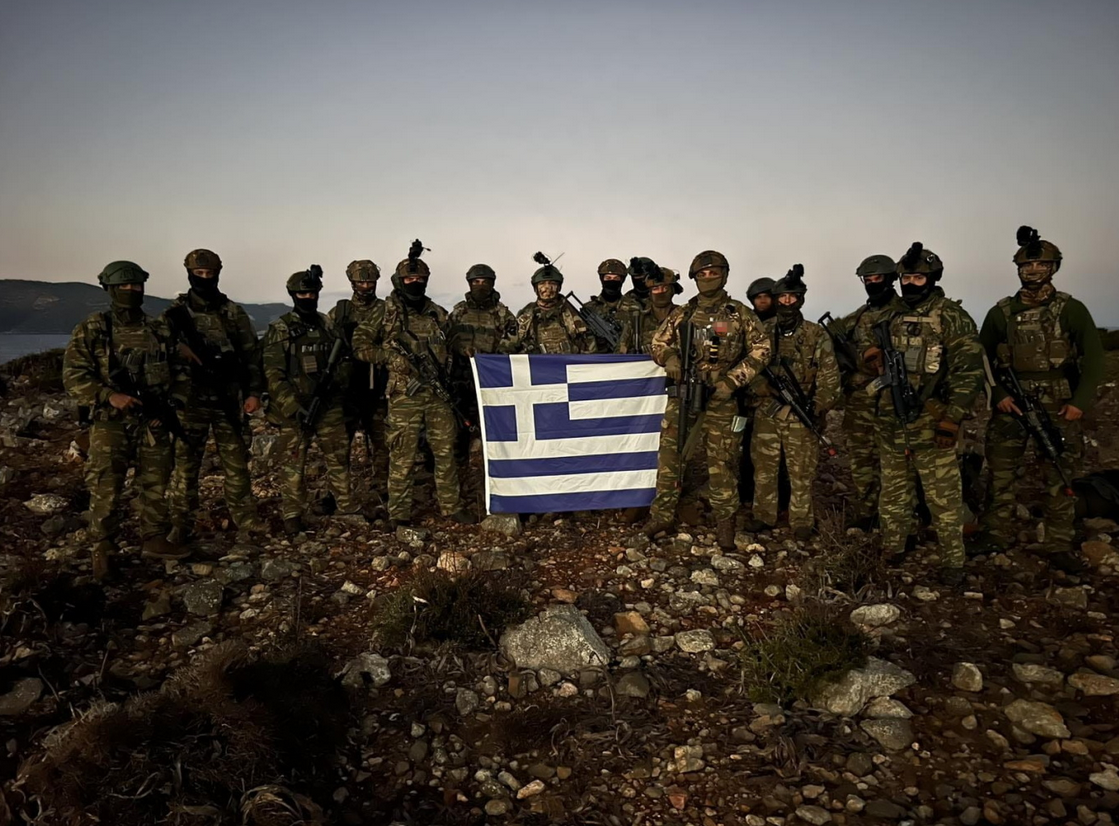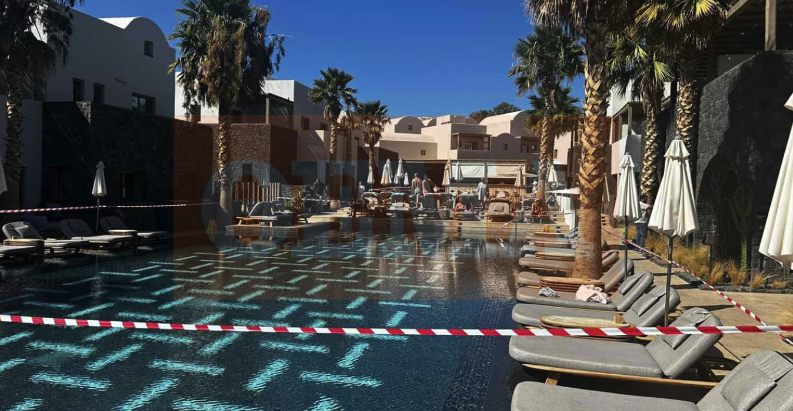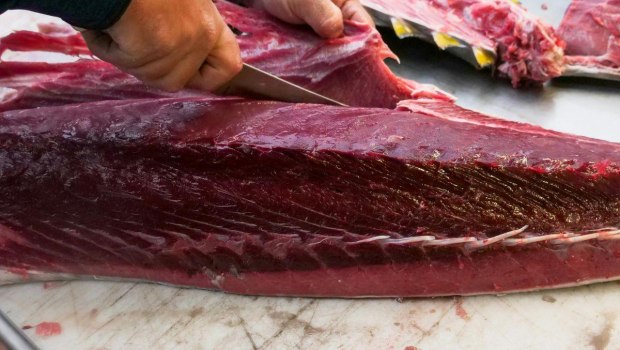Heraclius: The Byzantine emperor who crushed the Persians and established Greek as the off
Source: ProtoThema English
For more than a thousand years, the main enemy of the Greeks, Romans, and Byzantines in the East were the Persians.
The final clash between the Byzantines and the Persians took place during the reign of Emperor Heraclius, specifically between 622 and 628. The ultimate victory of Heraclius essentially marked the end of the Persian Empire; however, a new enemy appeared in the East: the Arabs, who, now united through their common religion (Islam), began seizing one by one the provinces of Byzantium.
Today we shall deal with the wars between Byzantines and Persians during the years of Heraclius (622–628). This article could not have been written without the valuable assistance of the eminent Byzantinist Mr. Alexios G. K. Savvides, Emeritus Professor of Medieval and Byzantine History at the University of the Peloponnese, and his books “The Ecumenical Byzantine State and the Emergence of Islam” and “The Cross and the Sacred Fire”, Herodotos Publications, 2022. We warmly thank here as well Mr. Alexios G. K. Savvides and the publisher Mr. Dimitrios Stamoulis for their invaluable help.
Heraclius on the throne – The first difficulties
On November 23, 602, Phocas, until then a centurion, ascended the throne of Byzantium after a mutiny of the Danubian troops, with the aid of the Hippodrome factions. The capable Emperor Maurice and his sons were slaughtered. Phocas, who remained on the throne until 610, was one of the worst emperors of Byzantium.
The late historian and Academician Dionysios Zakythinos (1905–1993) writes: “The tyrannical reign of Phocas (23 November 602–3 October 610) dislocated the defense of the country and provoked the most violent internal reactions.”
Theophylact Simocatta, Theophanes, and the author of The Miracles of Saint Demetrius lamented the anarchy that prevailed.
P. Goubert, in his work Byzance avant l’Islam, vol. I, p. 25, writes that the revolution of 602 “contributed to the miserable failure of the Reconquista and violently put an end to the dream of a Byzantine Mediterranean.”
The same author provides a very significant view: “The Hegira (the migration of Muhammad from Mecca to Medina and the beginning of Muslim chronology) would have been a simple episode of some Arab city without significance, and not the beginning of a new era. The year 602 explains the year 622.”
During the years of Phocas, many internal revolts took place. The Avars, who attacked Thrace, were appeased with huge subsidies, while the Persians, under Khosrow II, occupied many regions of the empire and reached Chalcedon, on the Asiatic shore of the Bosporus, opposite Constantinople (609).
This dire situation was confronted by the revolt of Heraclius the Elder, a former general of Maurice, who had achieved many successes against the Persians between 572–591. In 608, his nephew Niketas seized Egypt. In 609, Niketas set out from Carthage with the army, and Heraclius (575–641), son of Heraclius the Elder, with the fleet, both heading toward Constantinople. They were welcomed enthusiastically wherever they passed. Heraclius arrived first in the imperial city and, virtually without resistance, seized the throne, putting Phocas to death.
He married his beloved Eudokia, with whom he had two children. However, in 612, Eudokia, who suffered from epilepsy, died. Thus Heraclius married for a second time his niece Martina, daughter of his sister Maria from her first marriage to Martinus. For this act, Heraclius was sharply condemned at the Hippodrome. His brother Theodoros mocked him and was imprisoned for a time. Sergius, Patriarch of Constantinople, tried to dissuade Heraclius from marrying his niece, but he remained adamant.
Faced with external dangers, however, the Patriarch was forced to bless the marriage. Martina was proclaimed Augusta. Heraclius had nine children with her, four of whom died at a very young age. At least two were born frail and with disabilities. Heraclius also had another son, an illegitimate one, from an extramarital relationship — John Athalarichos.
Avars, Slavs, and Persians besiege Byzantium
As we mentioned, the situation Heraclius found when he ascended the throne was dramatic. Theophanes characteristically writes:
“King Heraclius found the affairs of the Roman state paralyzed. For the Avars had devastated Europe, and the Persians had ravaged all of Asia, capturing the cities and annihilating (destroying) the Roman army in war.”
Meanwhile, in the East, the Persians occupied many Byzantine provinces and cities. On May 5, 614, after a short siege, Jerusalem was captured. The sack and looting of the holy city, and the transfer of the Holy Cross to Ctesiphon, capital of the Sassanids, caused deep emotion and sorrow throughout the empire.
Byzantine Spain suffered successive attacks from the Visigoths, to whom it finally succumbed in 624. The provinces along the Danube and the rest of Europe endured unbearable pressure from the Avars and Slavs, who had besieged Thessaloniki in 604. In 614, the nation of the Sclaveni, “a countless multitude,” built wooden ships and overran “all Thessaly and the islands around it, and of Greece, indeed also the Cyclades, and Achaia, Epirus, most of Illyricum, and part of Asia” (The Miracles of Saint Demetrius: Migne, Patrologia Graeca, vol. 116, col. 1325).
In 617, the Avars also besieged Constantinople. The situation for the Byzantine Empire was tragic. In 618, Heraclius considered transferring the capital to Carthage in Africa, but he was strongly pressured, especially by Patriarch Sergius, not to do so. Thus, the emperor reorganized his forces and, after “buying” peace from the Avars with costly payments in gold and hostages, was ready to campaign against the Sassanid Persians.
The battles of Heraclius with the Persians
Amid intense national and religious fervor, Heraclius himself took command of his armies. The religious ceremonies that preceded his departure gave this campaign the character of a crusade. The Latin chronicler of the Crusades, William of Tyre, significantly begins his narrative with the successes of Heraclius.
The emperor, having entrusted the protection of his underage son, Heraclius Constantine, and the management of state affairs to Patriarch Sergius and the magister and patrician Bonus (or Bonosus), departed from Constantinople on Easter Monday, 622 AD (April 5).
Processions had preceded his departure, while the acheiropoietos (not made by human hand) icon of the Theotokos accompanied the Byzantine troops. Heraclius was accompanied by the court poet and iambic writer George Pisides.
The Byzantine forces initially advanced into Asia Minor, where in the autumn of 622 the clashes with the Persians began. The port of Trebizond was the main supply base of the Byzantines. Heraclius’ war with the Persians took place in three phases.
In the first phase, the Persians withdrew from western and central Asia Minor. The first major battle occurred in Armenia and ended with the defeat of the Persian general Shahrbaraz (Sarvaraz or Sarvaros in Greek) and the reconquest of all Asia Minor (early 623) by the Byzantines.
However, Heraclius was forced to return hastily to Constantinople to renew, with new humiliating concessions, peace with the Avars. Soon afterward, however, he returned to the eastern campaign, responding to the insulting letter of the Sassanid ruler Khosrow II, who wrote that he would grant peace only if the Byzantines “renounced Christ and worshiped the Sun,” as reported by the Armenian bishop and historian Sebeos in his History of Heraclius.
In the second phase of the war, Heraclius invaded the Armenian territories and Atropatenian Media (modern-day Azerbaijan). Along with him were other peoples: the Lazi, the Iberians (today’s Georgians), the Abasgians, and the Turkic-speaking Khazars. Many Persian fortresses were captured. Heraclius pursued Khosrow as far as the city of Ganzaka or Ganzak, which he seized. Next came the city of Thebarmais. Theophanes characteristically writes:
“… and the king, having departed from Gazakon, took Thebarmais and, entering into it, consumed by fire the temple of Fire and, having set all the city aflame, destroyed it by fire…”
The temple of Fire (temple of Zoroaster) was burned in revenge for the destruction of Jerusalem ten years earlier. During the harsh winter of 623–624, Heraclius withdrew to Albania of the Caucasus. The Khazars, due to the weather conditions, abandoned Heraclius, who in 624–625 remained in Pontus with many captives and spoils.
At that time, Persians and Avars moved against Constantinople. Previously, it was believed that the two peoples acted jointly. It seems, however, from more recent research, that their operations were independent. Shahrbaraz again reached the Bosporus, while the khagan of the Avars did not honor the peace treaty and, at the head of a multitude of Avaro-Slavs and the remnants of the Germanic-speaking Gepids, blockaded the Queen of Cities by land and sea (mid-626). Heraclius, trusting in the defenders of the City, did not make the mistake of abandoning his positions in the East.
The few defenders of the City and the heroism of the emperor’s associates—especially that of Patriarch Sergius, who went back and forth along the ramparts encouraging the defenders while holding in his hands the icon of the Theotokos—forced the Avars and Slavs, whose small ships were destroyed by the Byzantine fleet, and also Shahrbaraz, to abandon the siege (August 626).
The Paschal Chronicle and the Homily for the First Anniversary of the Siege, composed in 627 by the cleric Theodoros Synkellos, give many details about it. Great assistance to the defenders of the City was also offered by the emperor’s brother, Theodoros, who, after crushing Sahin, the deputy commander of the Persians in northeastern Asia Minor, returned to the Queen of Cities. The rather unexpected victory was attributed to the “Invincible Champion General,” the Theotokos of Blachernae, since the final victorious naval battle took place in the area of the Golden Horn, near the palace of Blachernae, at the northeastern edge of Constantinople; and since then, in honor of the Virgin Mary, the “Akathist Hymn” has been sung, attributed to Romanos the Melodist, to George Pisides, or even to Patriarch Sergius himself.
The Third Phase of the Byzantine–Persian War – The Battle of Nineveh (627) – Dorkon: the Bucephalus of Heraclius
After all these events, Persian ambitions in the southeastern Mediterranean and the Aegean were brought to an end. It was still necessary, however, for northeastern Asia Minor to be cleared of the enemies of Byzantium. This Heraclius accomplished, bringing again under Byzantine control the regions of Armenia and the Caucasus, with the help of the local Christianized tribes and of the Khazars (627). It was now time to deliver the final blow to the Persians.
The decisive battle took place near the ruins of ancient Nineveh, east of the Tigris, close to the plain of Gaugamela, where in antiquity two empires had fallen after tremendous battles: that of the Assyrians to the Babylonians (612 BC) and that of the Achaemenid Persians to Alexander the Great (331 BC).
K. Paparrigopoulos writes:
“… all the chroniclers extol the personal bravery of Heraclius, who on that unforgettable day (12 September 627) proved himself equal to the irresistible fury of Alexander the Great…”
Theophanes likewise describes the emperor’s valor, whose horse, Dorkon, like another Bucephalus, led him in triumph among the enemy ranks. Heraclius had another trait in common with Alexander: he placed himself at the head of his troops and fought in person.
Let us see what Theophanes writes:
“… And our ruler entered the front line and began to fight with the leader of the Persians (the general Razates), whom he defeated with the help of the Theotokos. Another (Persian), who then attacked him, managed to strike him on the lips, from which blood began to flow from the wound, but the emperor killed him. Then the sound of trumpets was heard, and a fierce battle began, which soon spread on both sides. The emperor’s horse, Dorkon, was wounded in the thigh by a Persian foot soldier, but the cataphract armor he wore prevented the enemy blows from injuring him (Dorkon) in the face…”
Razates and other prominent Persian officers were killed in the Battle of Nineveh. This was followed by the capture of the two most important cities of the Persian kingdom: Dastagird and the capital, Ctesiphon (628). Khosrow II was assassinated. His son and successor, Kavadh II – Siroes, with the “everlasting peace,” as Theophanes calls it, returned to Byzantium Armenia, Mesopotamia, Syria, Palestine, Egypt, and Cyrenaica/Tripolitania (modern Libya). The Byzantine–Persian borders reverted to those of the time of Maurice (591), while Siroes promised to respect the Christians living within his realm. It was the final clash between the Greco-Roman and the Persian (Iranian) worlds.
The Byzantinist L. Bréhier, who belonged to those who regarded Byzantium as the continuation of the Roman state, characterized Heraclius as the greatest general of the Roman Empire since the time of Trajan (Roman emperor, 98–117).
The Celebrations of Victory
With the triumphant victory proclamation of 628, Byzantium was informed of the defeat of its great enemy, as the Paschal Chronicle describes:
“… Let all Christians praise with hymns of joy the holy name of the one and only God… for the arrogant, impious, and God-fighting Khosrow has fallen, and his lifeless corpse has been hurled into the depths of the earth, and forever extinguished is the memory of him who dared and had the insolence to utter boastful words and not regard the greatness of Our Lord Jesus Christ…”
Theophanes, in his Chronographia, describes the triumphant reception of Heraclius in the Queen of Cities:
“… When the inhabitants of the City learned of his arrival, they received him together with the Patriarch (Sergius) and his son Constantine (the future Heraclius II) with festive torches, with branches of olive, and with tears of joy in their eyes… giving thanks to the Almighty with hymns of praise…”
On March 21, 630, Heraclius restored and set up for public veneration the Holy Cross in Jerusalem.
“The emperor restored the Cross in its place (in the crypt of the Holy Sepulchre) and returned all the holy church vessels (which the Persians had seized in 614), while also distributing gifts to the clergy and to the people of the city,” writes the Armenian Sebeos in his History of Heraclius.
Heraclius’ panegyrist, George Pisides, went so far as, in verses addressed to Plutarch (the Boeotian author of the Parallel Lives), to emphasize that his emperor embodied the glory of all the great figures of ancient Greece and Rome.
Epilogue
Apart from his military achievements, Heraclius established the institution of the themes (administrative districts of the empire), strengthened the public treasury, and sought—achieving it to a great extent—to promote religious unity. He also established Greek as the official language of the state, replacing the Imperator Caesar Augustus with Basileus in official documents, inscriptions, and coinage.
However, the disastrous period of Phocas and the underestimation of Muhammad and the new religion, combined with a series of Byzantine defeats, soon led to the loss of many provinces and the dominance of Islam in them—leaving the great, valiant warrior-emperor in depression and with declining physical health until the end of his life, in 641…
Sources:
- Alexios G. K. Savvides, “The Ecumenical Byzantine State and the Emergence of Islam”, Estia Publications, 1990.
- Alexios G. C. Savvides, “The Cross and the Sacred Fire”, Herodotos Publications, 2022.
- Dionysios A. Zakythinos, “Byzantine History 324–1071”, Third Edition, 2015, Dodoni Publications.
We once again warmly thank the eminent Byzantinist Mr. Alexios G. K. Savvides and the publisher Mr. Dimitrios Stamoulis for their invaluable assistance.
Ask me anything
Explore related questions
The original article: belongs to ProtoThema English .





